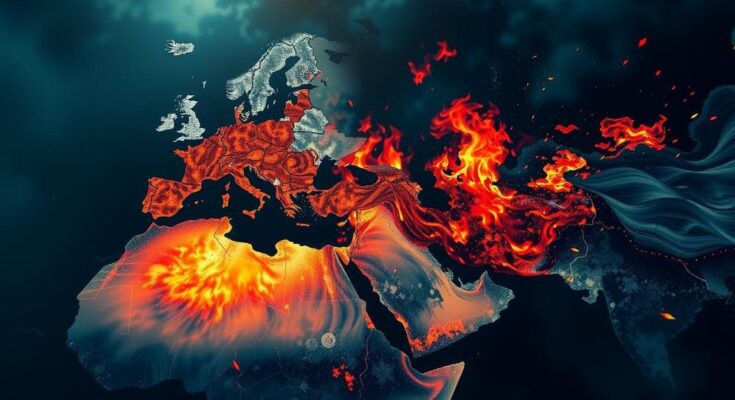The Iranian axis faces significant setbacks in Syria and Lebanon due to a forced cease-fire on Hezbollah and successes by Sunni rebels. This shift occurs amid ongoing tensions in Gaza, with Israel not completely safe from repercussions. The events indicate a changing balance of power in the region.
This past week has proven to be challenging for the Iranian axis in the Middle East, marked by significant setbacks for both Iran and Hezbollah. Following a cease-fire agreement imposed on Hezbollah that involved unfavorable conditions, the dynamics in Syria have dramatically shifted against President Bashar Assad. The recent successes of the Sunni rebels, likely spurred by the new cease-fire terms, signify a notable turning point since Russian intervention enabled Assad’s regime to regain control over substantial regions in 2018. Thus, while the Iranian axis suffers these blows, Israel remains in a precarious position, continuing to navigate the aftermath of the October 7 incident, coupled with the evolving conflict in Gaza, which former President Trump is reportedly seeking to resolve.
The Iranian axis consists of Iran, Hezbollah, and their allied forces in the region, which have historically held significant influence over Syria and Lebanon. The cease-fire agreement imposed on Hezbollah represents a critical reduction of their power, while the Sunni rebels in Syria have recently gained momentum, challenging Assad’s regime. The geopolitical landscape in the Middle East is heavily impacted by these developments, especially in the light of the tensions related to Israel and the situation in Gaza. Understanding these shifts is essential to grasping the broader implications for regional stability.
In summary, the Iranian axis has experienced notable setbacks this week, particularly concerning Hezbollah and Assad’s regime. The successful operations of the Syrian rebels reflect a changing tide that could have far-reaching consequences throughout the region. Notably, Israel continues to navigate a complex and unstable environment post-October 7, emphasizing that while the Iranian axis is currently under pressure, the overall situation remains delicate with potential ramifications yet to unfold.
Original Source: www.haaretz.com




